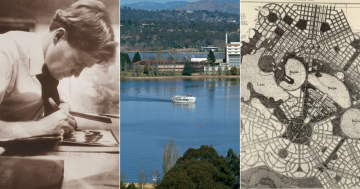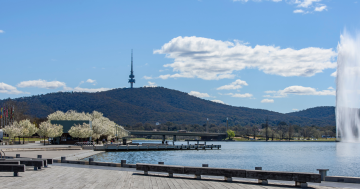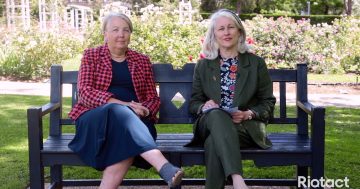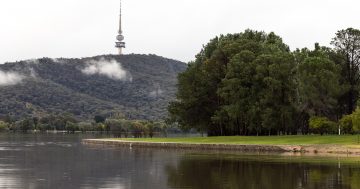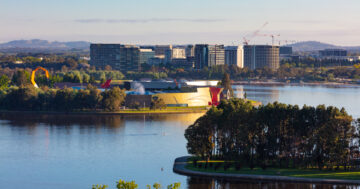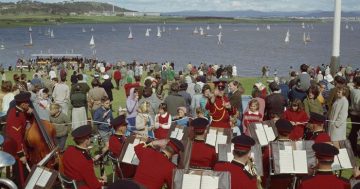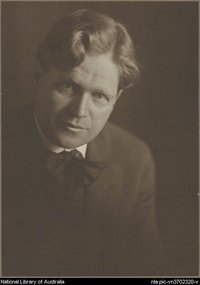
The Minister for Planning, Andrew Barr, is hosting a public panel discussion on planning and somehow I’ve ended up on the panel.
Here are the details:
Walter Burley Griffin is Dead Forum
The forum will be held on Tuesday 16 November at 7.30pm at the ACT Legislative Assembly Reception Room.
The format will be in the style of ABC TV’s Q&A. You get to ask the questions and hear from the next generation of community leaders in Canberra.
Panel members include:
Brooke Yates – ACT Young Planner of the Year
Emma Robertson – Youth Coalition of the ACT
John Griffiths – Founder of the RiotACT website
Greg Mews – Coordinator ACT Heart Foundation Active Living ProjectWe only have 120 seats available for this forum and they are going fast. Please RSVP to guarantee your seat.
If you’re interested in attending then you can call 6205 0011 or email barr@act.gov.au.
Minister Barr’s also penned an op-ed piece on this which I reproduce for you below:
Walter Burley Griffin is Dead
“I have planned a city that is not like any other in the world. I have planned it not in a way that I expected any government authorities in the world would accept. I have planned an ideal city – a city that meets my ideal of the city of the future.” – Walter Burley Griffin, 1912
Walter Burley Griffin was born in 1876. He has had no involvement in the development of Canberra since 1920. His plans for the city were never really implemented. Yet his legacy and the deconstruction of his “ideal city ” vision continues to dominate debate about the future of Canberra.
In pop culture terms, Griffin is surely the “Jebediah Springfield” of Canberra. It is hard not to draw parallels between the town pride demonstrated in The Simpsons for Springfield’s founder and that shown in Canberra planning circles for Griffin.
Rather than attempt to re-invent Jebediah Springfield‘s legacy, Lisa Simpson decided to leave the past in the past. Perhaps it is time Canberrans did the same.
Walter Burley Griffin is dead. We should not try to re-interpret his ideal of the city of the future. We should not be casting back a century for answers to Canberra’s contemporary challenges. Griffin could never have foreseen the changes in lifestyles that technology has delivered and that climate change will require. It is time to move past the bickering over the “Griffin Legacy”.
Our second century as a city must be about responding to our emerging needs and taking new opportunities as they present themselves.
My vision for Canberra in 2030 is a progressive, inclusive and vibrant city with something to offer singles, couples and families. A city that offers services, entertainment, hospitality and amenities for a growing local and regional community. A place where people from many different backgrounds can live, work and play.
Over the next twenty years Canberra’s population will grow by around 80,000 people. We will need about 50,000 more homes in Canberra to keep up. This level of growth is fairly similar to what we have experienced in the past twenty years. In 1990 our population was 283,000. Today it is nearly 360,000.
Data from the Australian Bureau of Statistics indicates that between 2006 and 2031 single people and couples without children will make up 80% of the increase in households. We must consider how and where we deliver housing that meets the needs of this type of household – both for the young and old.
Current ACT Government policy, articulated through the Canberra Spatial Plan, supports the development of a compact city and sets targets for 50% of future urban growth to occur within a 7.5km radius of Civic. It also proposes keeping future urban development within 15km of Civic. This means a significant change to the way we have traditionally done things.
We are starting to see that change now – in the past decade about half the new homes built in Canberra have been apartments or townhouses and they have been built in established areas.
Most Canberrans still choose to live in a separate house on its own land but apartments and townhouses in established areas are becoming much more popular. It is easy to see why – they are generally located close to employment and they are much more affordable and sustainable.
For many, these housing choices provide any number of opportunities and possibilities, allowing people to do what they want to do and live in suburbs they want to live in. Canberra is taking significant steps towards becoming more diverse and embracing different life styles and life choices. We now have a variety of neighbourhoods, public places and private places that a range of people can enjoy. I think this should continue.
The next twenty years will be all about making the right choices to become a more affordable and sustainable city. Making the right choices to ensure equitable access to housing, jobs and education. Making the right choices to overcome long commutes and provide better public transport options. Essentially it is about planning to improve livability, not planning for the sake of planning.
As the Grattan Institute identified in their 2010 Report The Cities We Need:
“Planning is indispensible to maintaining and improving cities as great places to live. But good planning also requires not planning; recognition that vibrant city life is partly spontaneous and that, in the long run, cities are likely to produce ways of living that we did not anticipate. That is no bad thing. We simply need to adapt and find ways to nurture what we value most.”
We will never know Griffin’s view on these contemporary planning challenges. He is not around to debate them with us. We have had more than enough attempts to re-invent his legacy though. It is time to move beyond this tired old debate. Walter Burley Griffin is dead.











